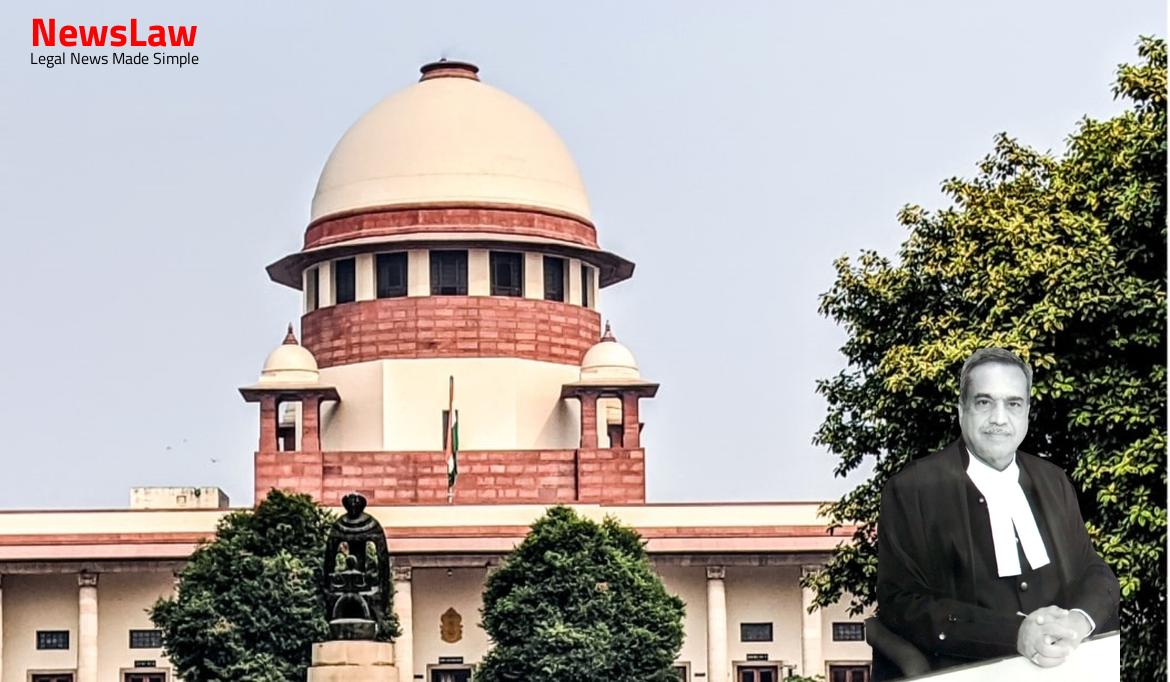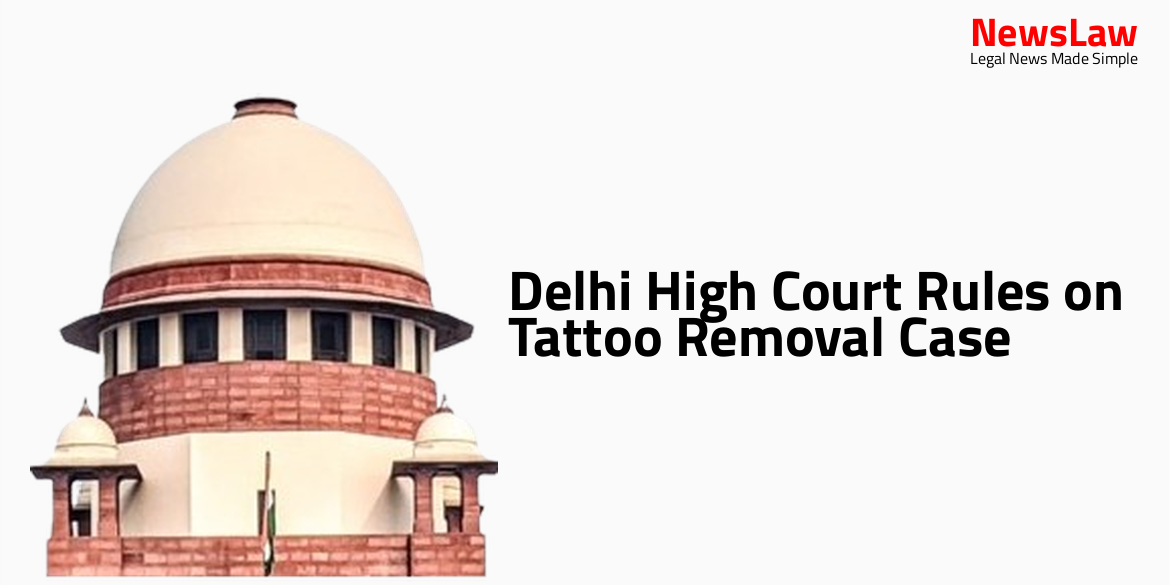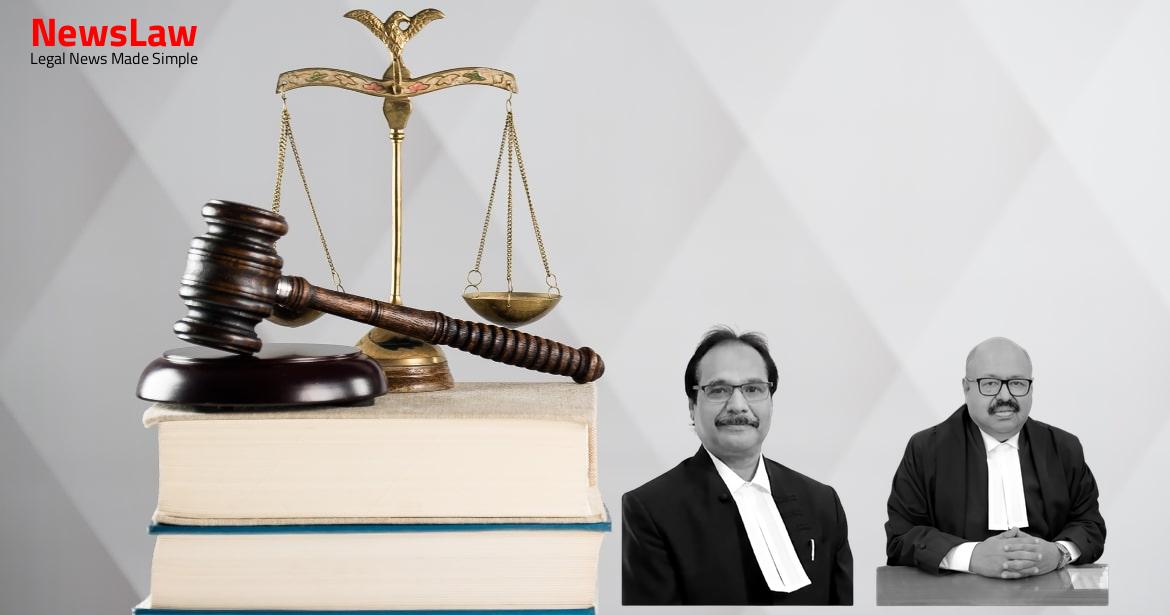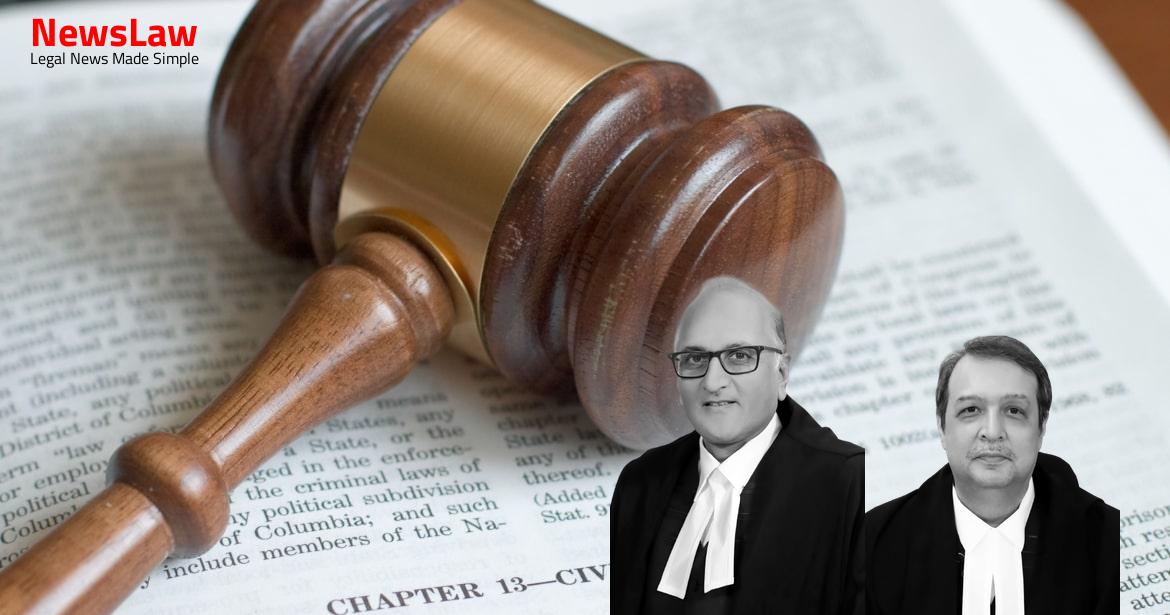Explore the in-depth legal analysis surrounding the exclusion of related parties from the Committee of Creditors under the Insolvency and Bankruptcy Code. This case delves into the critical interpretation of statutory provisions and the courts’ examination of transactions to determine related party status. Understanding the court’s reasoning behind the exclusion is essential to grasp the complexities of insolvency proceedings. Stay tuned for a detailed breakdown of the legal implications and implications of the court’s decision.
Facts
- AAA and Spade filed appeals under Section 62 to challenge their exclusion from the CoC on the grounds of being related parties of the Corporate Debtor.
- The key issues for consideration in these appeals are whether Spade and AAA are financial creditors, whether they are related parties of the Corporate Debtor, and whether they should be excluded from the CoC.
- The CIRP was initiated against the Corporate Debtor in April 2018, with Spade and AAA submitting claims as financial creditors during the process.
- NCLT allowed Spade and AAA to submit their claims but other financial creditors like Phoenix and YES Bank raised objections to their inclusion in the CoC, citing their status as related parties.
- Applications were filed by YES Bank and Phoenix seeking the exclusion of AAA and Spade from the CoC based on their related party status, leading to a judgment by NCLT on the matter in July 2019.
- AAA and Spade’s claims, as well as their exclusion from the CoC, have been contentious issues in the ongoing legal proceedings.
- NCLAT held that Spade and AAA are related parties of the Corporate Debtor based on various provisions of the IBC.
- The Appellate Tribunal noted specific transactions and arrangements between Spade, AAA, and the Corporate Debtor which indicated their related party status.
- NCLAT upheld the exclusion of Spade and AAA from the CoC due to their close association with the Corporate Debtor and attempts to gain entry through related parties.
- NCLAT dismissed the appeal despite acknowledging that Spade and AAA are financial creditors by deeming them as related parties.
Also Read: Electoral Malpractices in Mayor Election
Arguments
- Argument presented by Mr. Kaul and Mr. Sen about the unregistered and unstamped Memorandum of Understanding.
- Representation of learned Senior Counsels: Mr. K. V. Viswanathan for AAA and Spade, Mr. Neeraj Kishan Kaul for Phoenix, and Mr. Sanjiv Sen for the Resolution Professional.
- NCLT’s finding against AAA and Spade for not being financial creditors leading to the determination that they were not required to consider the second issue.
- Interpretation of the expression ‘is a related party’ in the context of Section 21(2) and the need for a present rather than a past reference.
- Purposive interpretation advocated by Mr. Kaul for Section 21(2).
- IRP’s observation regarding interest claimed by Spade and absence of adjustments in payment by the Corporate Debtor.
- Argument on the collusive nature of transactions between the Corporate Debtor, Spade, and AAA.
- Contrast drawn between the use of ‘is’ as a related party in Section 24 and other provisions of IBC.
- Controversy surrounding the interpretation of ‘is’ a related party in the first proviso of Section 21(2) based on the timing of the relationship.
- Reference to Section 29A and the distinction between ‘is’ and ‘has been’ in different clauses.
- Emphasis on the application of the statute at the time of admission of the CIRP application in relation to being a related party.
- NCLT determined that the deposits received by the Corporate Debtor from Spade and AAA are financial debts, and rejected the IRP’s denial of their claims
- Mr. Arun Anand filed an unlawful claim as a financial creditor to manipulate CoC voting percentage
- Spade concealed collusive transactions and filed an illegal claim as a financial creditor for Rs. 52,96,00,000
- Arguments presented by Mr. Viswanathan questioning the eligibility of Spade as a financial creditor based on various factors
- NCLAT’s judgment on the eligibility of Spade and AAA as financial creditors and their exclusion from CoC
- AAA’s collusive Development Agreement with the Corporate Debtor, manipulated to bypass regulations
- Disputes over the disbursement of funds from AAA to the Corporate Debtor and other companies
- Validity of Spade and AAA as financial creditors upheld by NCLT’s previous decision despite subsequent challenges
Also Read: Balancing Power and Transparency: Electoral Bonds Struck Down, Disclosure Mandated
Analysis
- The analysis focuses on the determination of whether Spade and AAA were related parties of the Corporate Debtor during a specific period.
- The relationship between Mr. Arun Anand and Mr. Anil Nanda is highlighted as a crucial factor in establishing the related party status.
- The transactions between the Corporate Debtor, Spade, and AAA are examined, with findings of collusive nature impacting their classification as financial debt.
- The Memorandum of Understanding and various agreements are scrutinized to determine the legitimacy of financial claims.
- Consideration is given to the definition of ‘related party’ under the Insolvency and Bankruptcy Code and the Companies Act, 2013, to assess the broad scope of relationships covered.
- The relevance of the Insolvency Law Committee’s recommendations and the UNCITRAL Legislative Guide on Insolvency law is discussed in relation to related party disqualification from the Committee of Creditors.
- The interpretation of statutory provisions, such as Section 5(24) and Section 21(2), is examined to understand the disqualification criteria for related party financial creditors.
- Issues regarding re-submission of claims, remand to NCLAT, and the impact of NCLT and NCLAT decisions are addressed within the legal framework of the Insolvency and Bankruptcy Code.
- The analysis also considers the collective action problem in bankruptcy law and the need for a coordinated approach to maximize stakeholder value during insolvency resolutions.
- The implications of fraudulent transactions, lack of financial contracts, and commercial entanglements on the financial creditor status of Spade and AAA are deliberated upon.
- The interpretation of the terms ‘disburse’ and ‘time value of money’ in Section 5(8) of the IBC was discussed.
- The Insolvency Law Committee report examined the term ‘time value of money’ in relation to debt.
- The issue of ineligibility of a resolution applicant under Section 29-A(c) of the IBC was considered in Arcelor Mittal India Private Limited vs Satish Kumar Gupta.
- The exclusion in the first proviso to Section 21(2) should align with the object and purpose of the statute.
- The exclusion under the first proviso to Section 21(2) should apply when a financial creditor seeks a position based on debt created when it was a related party of the corporate debtor.
- The interpretation of statutes may require a liberal construction to fulfill the statute’s objects and purpose.
- Different meanings can be attributed to similar words in different parts of an enactment.
- The judgement in R S Nayak v. A R Antulay was referenced.
- A purposive interpretation of Section 29-A of the IBC was approved in Arcelor Mittal India Private Limited vs Satish Kumar Gupta.
- Avoidable transactions identified in the IBC include preferential, undervalued, transactions defrauding creditors, and extortionate transactions.
- Unearthing the real nature of transactions is crucial to prevent misuse of insolvency provisions.
- Sham transactions and collusive transactions were discussed in the context of insolvency.
- Justice Rohinton F. Nariman’s interpretation of the pre-2018 amendment regarding Section 29-A(c) was highlighted.
- The use of present tense in the first proviso to Section 21(2) indicates immediate disqualification under certain circumstances.
- The object and purpose of the proviso should guide its interpretation.
- The compensation for the time value of money must be considered in transactions to prevent sham dealings.
- A case involving a usufructuary mortgage and avoiding payment to creditors was mentioned.
- The purpose of excluding related parties from the CoC is to prevent conflicts of interest.
- A case involving interpretation of Section 19(1) of the Prevention of Corruption Act, 1947, was discussed, emphasizing the need for a purposive interpretation.
- The first proviso to Section 21(2) specifies that a financial creditor, unless falling under the exceptions in the second proviso, cannot have representation, participation, and voting rights in the CoC if it is a related party of the Corporate Debtor.
- Spade and AAA were initially considered financial creditors but due to collusive nature of their transactions with the Corporate Debtor, they cannot be labeled as financial creditors under Section 5(7)
- Spade and AAA were confirmed as related parties of the Corporate Debtor under Section 5(24)
- Spade and AAA were excluded from the Committee of Creditors (CoC) in accordance with the first proviso of Section 21(2) due to their collusive transactions and potential influence of Mr. Anil Nanda over them
Also Read: Recall of Resolution Plan Approval: Legal Analysis
Decision
- The appeals are disposed of
- Pending application(s) stand disposed of
Case Title: PHOENIX ARC PRIVATE LIMITED Vs. SPADE FINANCIAL SERVICES LIMITED (2021 INSC 51)
Case Number: C.A. No.-002842 / 2020



